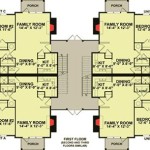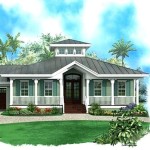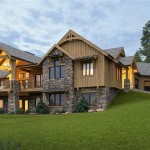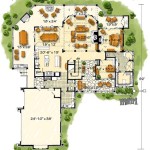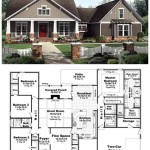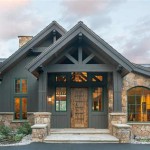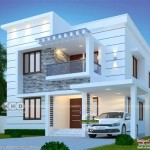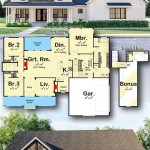Modern House Plans On Stilts: Elevated Living for the 21st Century
Modern house plans on stilts, also known as pile dwellings or pier homes, represent a fascinating intersection of architectural ingenuity and practical environmental adaptation. This design approach, traditionally used in areas prone to flooding or unstable ground conditions, is experiencing a resurgence in popularity, fueled by advancements in building materials and a growing awareness of sustainable construction practices. These elevated homes offer a unique blend of aesthetic appeal, functional advantages, and environmental sensitivity, making them an increasingly attractive option for contemporary homeowners.
The fundamental principle behind houses on stilts is the elevation of the habitable structure above ground level. This elevation is achieved through the use of vertical supports, typically constructed from reinforced concrete, steel, or treated timber. These supports, or stilts, are deeply embedded in the ground, providing a stable and robust foundation even in challenging terrains. The space created beneath the house can be utilized for a variety of purposes, including parking, storage, or even outdoor living areas, depending on the specific design and the surrounding environment.
The appeal of modern house plans on stilts extends beyond mere practicality. Architects and designers are increasingly embracing this design to create visually striking and environmentally conscious homes. The elevated structure allows for the incorporation of large windows and open-plan living spaces, maximizing natural light and ventilation. Furthermore, the increased height can provide stunning views of the surrounding landscape, enhancing the overall living experience.
Enhanced Protection Against Environmental Hazards
One of the most significant advantages of houses on stilts is their inherent protection against various environmental hazards. In areas prone to flooding, raising the living space above the flood line significantly reduces the risk of water damage to the building's structural components and interior furnishings. This can translate to substantial cost savings in terms of repairs and insurance premiums over the long term. Furthermore, elevated homes are less susceptible to damage from storm surges and rising sea levels, making them a resilient housing solution in coastal regions.
Beyond flood protection, houses on stilts can also offer enhanced protection against other environmental risks. In areas with unstable soil conditions, such as highly expansive clay or areas prone to landslides, the deep foundations of the stilts provide a more stable and secure base compared to traditional slab-on-grade foundations. The elevated structure also reduces the risk of termite infestation and other pest problems, as the open space beneath the house allows for better ventilation and easier inspection.
Another key benefit is the improved insulation and temperature regulation that can be achieved with elevated homes. The airspace beneath the house acts as a natural buffer, reducing the transfer of heat from the ground into the living space during hot weather and minimizing heat loss during colder months. This can contribute to significant energy savings and a more comfortable indoor environment. The elevation also allows for better airflow around the house, further enhancing natural ventilation and reducing the need for air conditioning.
Sustainable and Environmentally Conscious Design
Modern house plans on stilts are increasingly being recognized as a sustainable and environmentally conscious building option. The raised structure minimizes the building's footprint on the land, allowing for the preservation of natural vegetation and drainage patterns. This is particularly important in sensitive ecosystems or areas with limited land availability. The reduced ground contact also minimizes soil disturbance during construction, minimizing the impact on the surrounding environment.
The design of houses on stilts often incorporates sustainable building materials and energy-efficient technologies. The use of locally sourced timber, recycled steel, and other environmentally friendly materials can further reduce the building's environmental impact. Features such as solar panels, rainwater harvesting systems, and greywater recycling can be easily integrated into the design, further enhancing the building's sustainability credentials. The elevated structure also provides ample space for the installation of these systems, making them more accessible and easier to maintain.
Furthermore, the natural ventilation and daylighting opportunities offered by elevated homes can significantly reduce energy consumption for heating, cooling, and lighting. The strategic placement of windows and the use of shading devices can maximize natural light penetration while minimizing heat gain, creating a comfortable and energy-efficient living environment. The open space beneath the house can also be utilized for composting or gardening, further promoting a sustainable lifestyle.
Adaptability and Design Flexibility
Modern house plans on stilts offer a high degree of adaptability and design flexibility, allowing for the creation of unique and personalized living spaces. The elevated structure can be adapted to suit a wide range of site conditions and architectural styles. Whether the goal is a minimalist modern design or a more traditional aesthetic, the fundamental principles of elevated construction can be applied to achieve the desired outcome. The design can also incorporate a variety of materials and finishes, allowing for a seamless integration with the surrounding landscape.
The open space beneath the house can also be utilized in a variety of ways, depending on the homeowner's needs and preferences. It can be transformed into a covered parking area, a workshop, a storage space, or even an outdoor living area with a patio or deck. The possibilities are virtually endless, limited only by the imagination and the available space. The ability to customize the space beneath the house adds significant value and functionality to the overall design.
Moreover, houses on stilts can be easily expanded or modified over time to accommodate changing needs. The elevated structure allows for the addition of new rooms or floors without significantly impacting the existing foundation. This adaptability makes them a versatile and future-proof housing solution, capable of adapting to the evolving needs of the homeowner. The design can also be adapted to incorporate universal design principles, making the home accessible to people of all ages and abilities.
In conclusion, modern house plans on stilts offer a compelling alternative to traditional building methods. Their ability to withstand environmental hazards, their sustainable design principles, and their adaptability make them an increasingly attractive option for contemporary homeowners seeking a unique, functional, and environmentally conscious living space. As building technology and design innovation continue to advance, houses on stilts are poised to play a significant role in shaping the future of residential architecture.

House Design Plan Ch539 3 Stilt Plans On Stilts Carriage

Home Plan Ch546

Pin By Erik Brian On Home Design Stilt House Plans Stilts Affordable Village

Beach House Floor Plans Coastal Carriage

House Design Plan Ch462 8 On Stilts Elevated Plans Coastal

Modern Resort Type House With Stilt Concept Pinoy Eplans

Home Plan Ch539

Elevated House Plans Small Beach

Home Plan Ch464

Stilt Houses 10 Reasons To Get Your House Off The Ground

